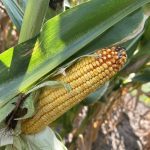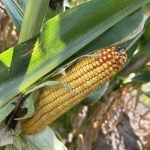MarketsFarm — With canola now near the top end of its range, prices could break out of being rangebound in the next several days, according to an analyst.
Canola has made gains over the last month or so, largely due to spillover from increasing prices for soyoil on the Chicago Board of Trade. Soyoil has been on the rise following higher prices for Malaysian palm oil, said David Derwin, analyst for PI Financial in Winnipeg.
Price increases for palm oil have been fueled by stronger global demand, particularly for biofuel. Also there have been production issues as Indonesia and Malaysia went through dry spells.
Read Also

U.S. grains: Grains off highs with fed in focus, soyoil down more than two per cent
Chicago | Reuters – Chicago corn and soybean futures sagged on Wednesday, retreating from multi-week highs on profit-taking and an…
Come Jan. 10, the U.S. Department of Agriculture (USDA) releases its next supply and demand report. Included in the world agricultural supply and demand estimates (WASDE) will be updated figures on U.S. grain and oilseed production.
Also, the USDA will issue its report on grain stocks as of Dec. 1. There have been indications the markets are positioning themselves ahead of the USDA reports.
If the January WASDE contains dramatic changes in data, that would shake up the markets, Derwin said.
On Jan. 15, the Phase One trade agreement between the U.S. and China is scheduled to be signed in Washington. Although the deal’s contents remain unknown, there has been strong speculation it could be a boon to U.S. agriculture. Expectations are China agreed to buy US$40 billion in U.S. agricultural products. That could include 35 million to 40 million tonnes of soybeans, according to reports.
Should soybeans greatly benefit from Phase One, Derwin stated there would be spillover into canola.
However, he cautioned, there has been a volume of trading which means movements either way could be exaggerated. Reports indicated low volumes of trading are likely to remain a feature in commodities, at least until the January WASDE.
— Glen Hallick reports for MarketsFarm, a Glacier FarmMedia division specializing in grain and commodity market analysis and reporting.

















